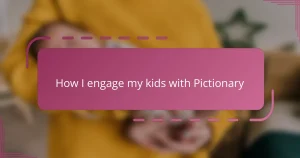Key takeaways
- Effective board game organization empowers children by promoting responsibility and independence during playtime.
- Sorting games by age and type enhances selection efficiency and supports tailored play experiences based on mood and energy levels.
- Creating a dedicated play area with thoughtful details fosters a focused and engaging environment for family game nights.
- Involving children in the organization process enhances their skills and makes tidying up a more enjoyable, shared experience.
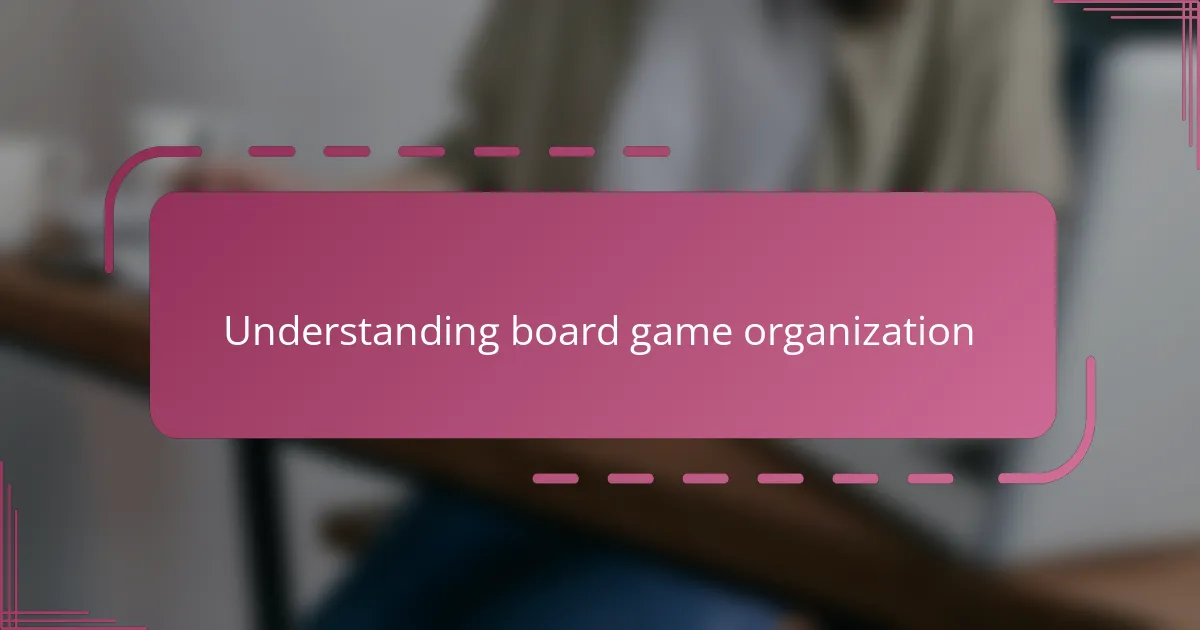
Understanding board game organization
When I first started organizing board games for my kids, I realized that understanding the essence of organization goes beyond just tidying up. It’s about creating a system that makes it easy for both parents and children to find and put away games without frustration. Have you ever felt the chaos of scattered pieces and missing cards just before playtime? That feeling alone showed me how crucial thoughtful organization really is.
In my experience, recognizing the unique components of each game—like differing piece sizes and rulebooks—helped me design storage solutions tailored to those needs. It’s not just about neatness; it’s about preserving those games so they last through countless family nights. This mental shift made me appreciate the role of organization as a way to respect and enjoy our family time.
I wonder, have you noticed how kids react when they can easily access their favorite games? That moment of autonomy sparked in my children a surprising sense of responsibility, making clean-up less of a chore. Understanding this dynamic opened my eyes to organization being a tool that empowers kids, not just a task for parents.
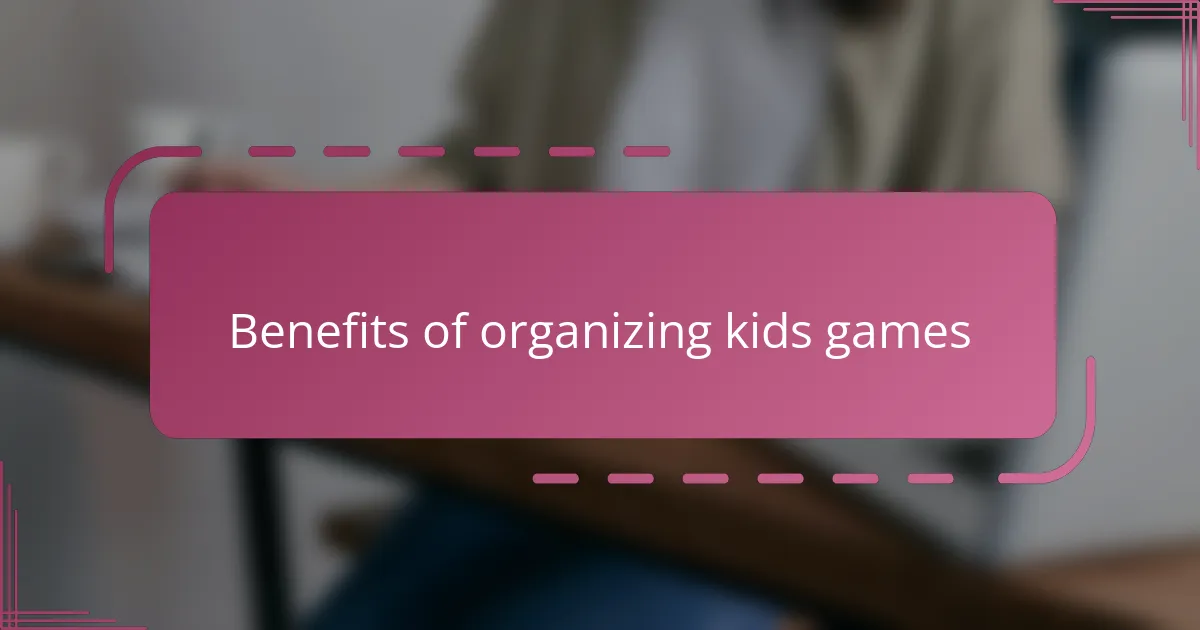
Benefits of organizing kids games
When I started organizing my kids’ board games, I quickly saw how it reduced the usual scramble before playing. Having everything sorted means less time hunting for missing pieces and more time actually enjoying the game. Doesn’t that make family game nights feel more relaxed and fun?
Another benefit I noticed is how organization builds kids’ confidence. When my children can easily find and put away their games, they feel proud and in control. Have you ever watched a child beam after managing a task all on their own? That small win goes a long way in nurturing responsibility.
Plus, keeping games organized protects them from wear and tear. I’ve learned that neatly storing components prevents losing cards and breaking pieces, which saves money and frustration. Isn’t it amazing how a simple system can extend the life of our beloved games?

Choosing the right storage solutions
Choosing the right storage solutions made a big difference for me once I shifted from just piling games in a closet to using clear bins and labeled drawers. It wasn’t just about aesthetics; it helped my kids quickly spot what they wanted without flipping through every box. Have you ever seen the relief on a child’s face when they don’t have to ask for help? That’s exactly the feeling I wanted to create.
I learned that size matters too. Some games have tiny pieces that need separate containers, while others can stay together in their original boxes. I remember one game with miniature figures that got lost until I started using small zip bags — it saved me countless headaches. Does your storage accommodate these little parts, or do they tend to go missing?
Another thing I found useful is choosing storage that matches our daily routine. Open shelves at kid-friendly heights invite children to grab a game themselves, encouraging independence. Isn’t it wonderful how a simple change in storage design can spark more play and less nagging? The right system supports both convenience and family fun.
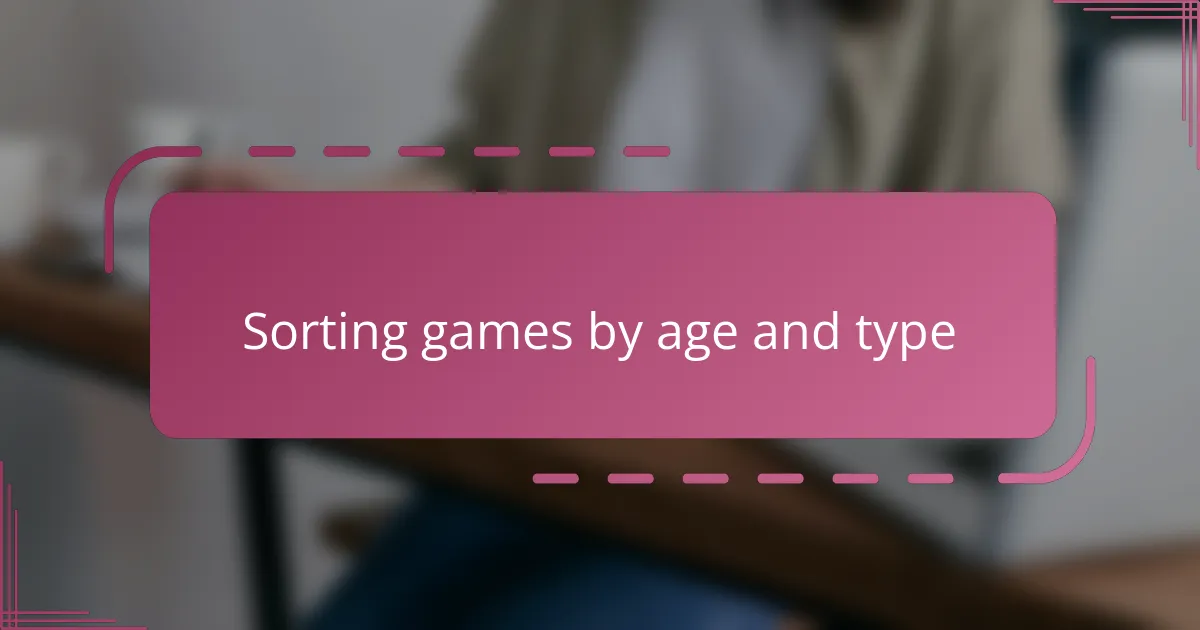
Sorting games by age and type
Sorting games by age and type became a game-changer for me. I started grouping games into piles like “ages 3-5” or “ages 6 and up,” which made choosing the right game for my kids so much easier. Have you ever struggled to find an age-appropriate game in a big messy pile? That simple step saved me from many “too hard” or “too easy” moments.
I also found that sorting by type—like puzzles, strategy games, or cooperative play—helps us pick activities that match the mood or energy level of the day. For example, on quiet afternoons, I know to grab a cooperative game that encourages teamwork rather than competition. Doesn’t tailoring the game to the moment make playtime feel more meaningful?
What’s been surprising is how this system taught my kids to think about their own preferences. When they see categories clearly labeled, they start to self-select based on what they enjoy or want to practice, like logic or creativity. Isn’t it rewarding to watch them take charge of their own fun while developing new skills?
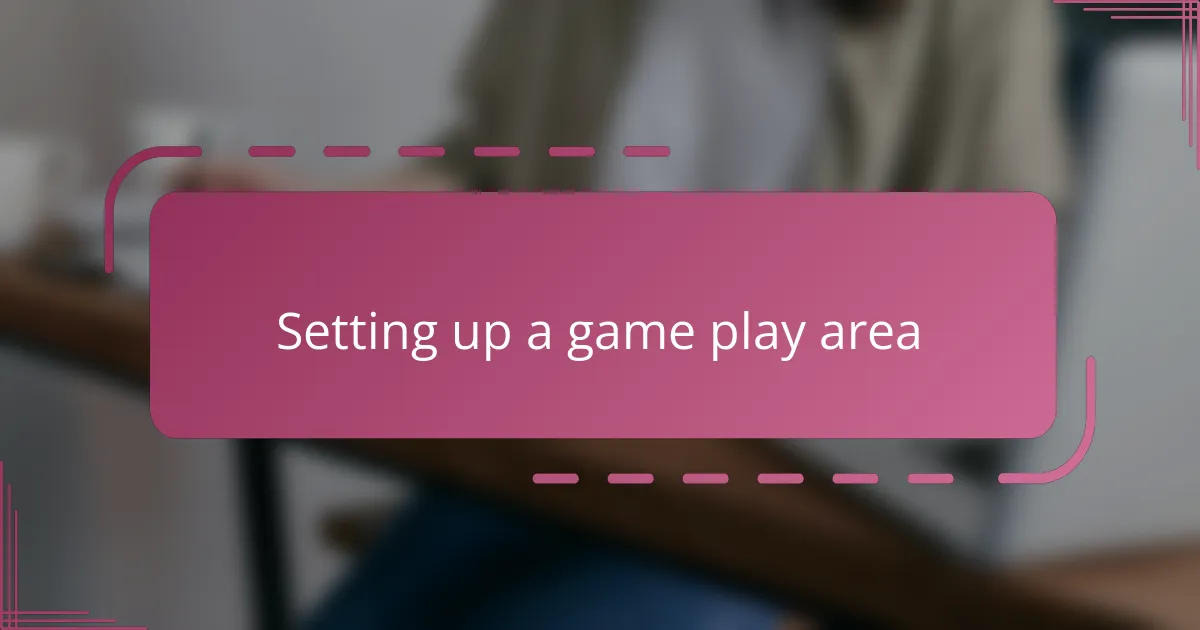
Setting up a game play area
Creating a dedicated game play area was a game-changer for me. I carved out a cozy corner with a low table and comfy cushions, making it inviting for the kids to sit down and focus. Have you noticed how having a special spot instantly shifts children’s mindset from chaos to fun? That little ritual of sitting down together sets the tone for quality playtime.
I also made sure the area stays clutter-free by keeping only one or two games out at a time. This keeps distractions away and makes setup quick and smooth. I’ve seen how reducing options in the play area helps my kids dive right into the game without overwhelm—do you find that fewer choices sometimes spark more excitement?
Lighting and accessibility mattered more than I expected. Bright, natural light makes it easier for kids to see cards and pieces, while placing everything within arm’s reach empowers them to manage the game independently. Isn’t it amazing how thoughtful details like these turn a simple corner into a spot where memories and skills grow?

Involving kids in organization
Getting my kids involved in organizing board games changed the whole experience for us. When they help decide where each game goes or sort the pieces, it becomes more than just a chore—it turns into shared quality time. Have you ever noticed how kids light up when they feel trusted with a responsibility? That pride they show is priceless.
I remember once asking my daughter to help label the game boxes. At first, she was hesitant, but then she got creative, picking colors and drawing little icons that made sense to her. That simple task boosted her enthusiasm for tidying up later on. Don’t you think letting kids add their personal touch makes organization feel like their own project?
Involving kids also teaches them valuable skills, like sorting and categorizing, in a practical way. Plus, guiding them gently through these steps cultivates patience and care for their belongings. Have you found that children learn best when they’re active participants rather than passive observers? I certainly have—and it makes all the difference in keeping the games neat long-term.
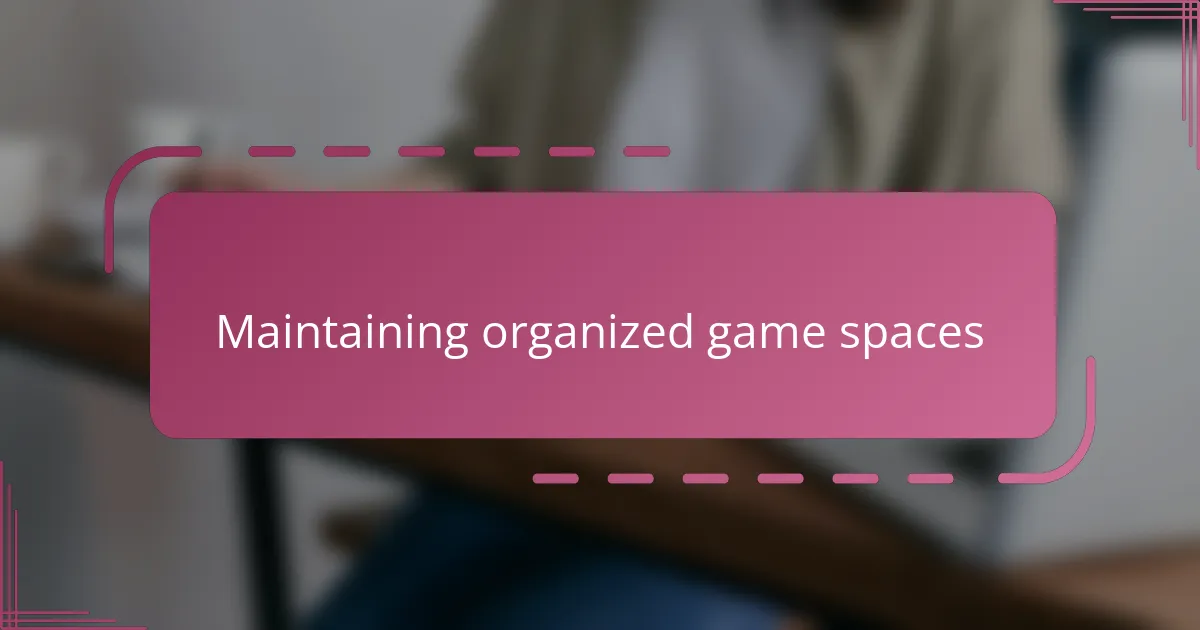
Maintaining organized game spaces
Keeping the game space tidy isn’t a one-time task—it’s an ongoing habit. I noticed that setting a simple routine, like a five-minute clean-up after each play session, makes a huge difference. Have you ever tried turning clean-up into a quick game? My kids actually race to see who can put things away fastest, and it’s surprisingly effective!
Another trick I swear by is using clear, labeled containers for different game parts. It helps my kids—and me—spot exactly where everything belongs at a glance. I remember one afternoon when my youngest confidently put every piece back into its right spot without me lifting a finger. Moments like that make all the effort worthwhile.
I also learned that the game area needs regular tweaks to stay functional. As my children grow, their interests and skill levels change, so I update the storage labels and swap out games to keep things fresh. Doesn’t it feel good to see your system evolve alongside your kids, making organization less of a hassle and more of a natural part of play?

